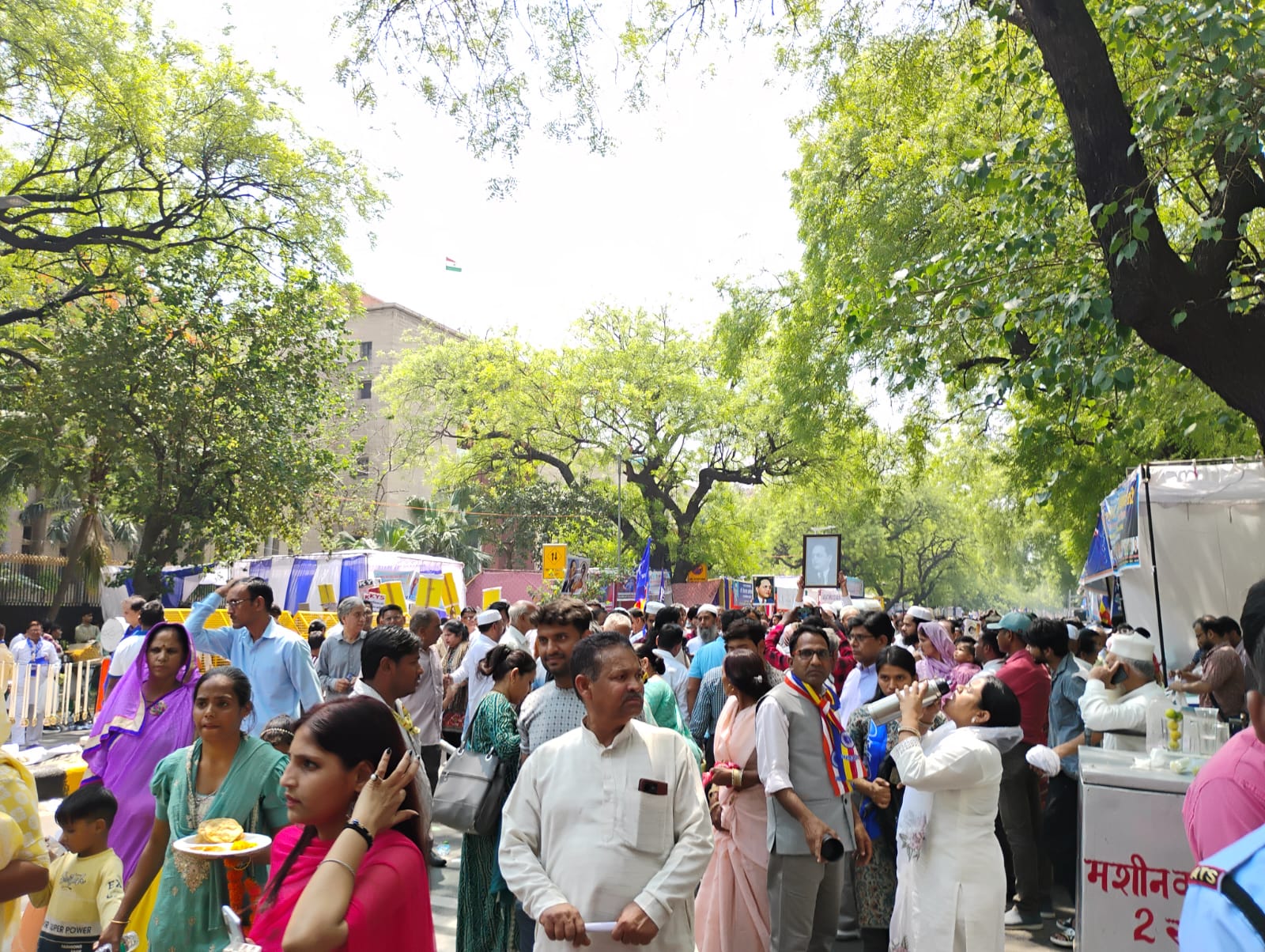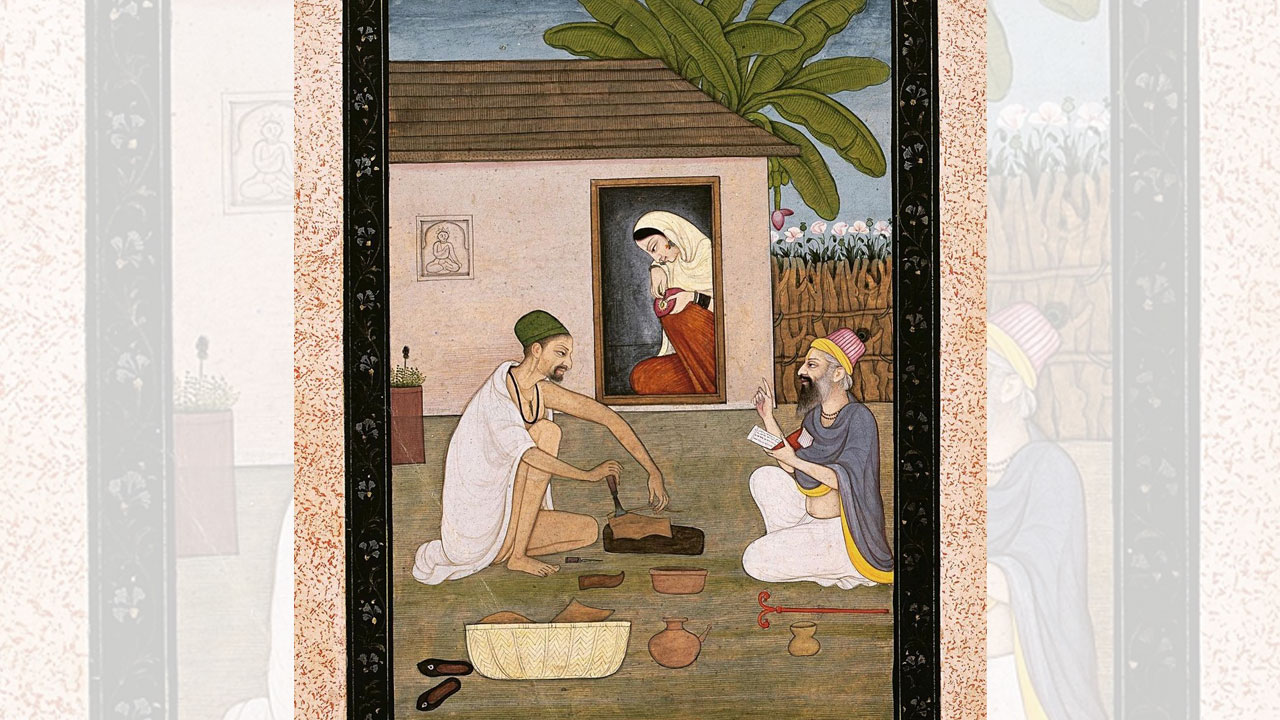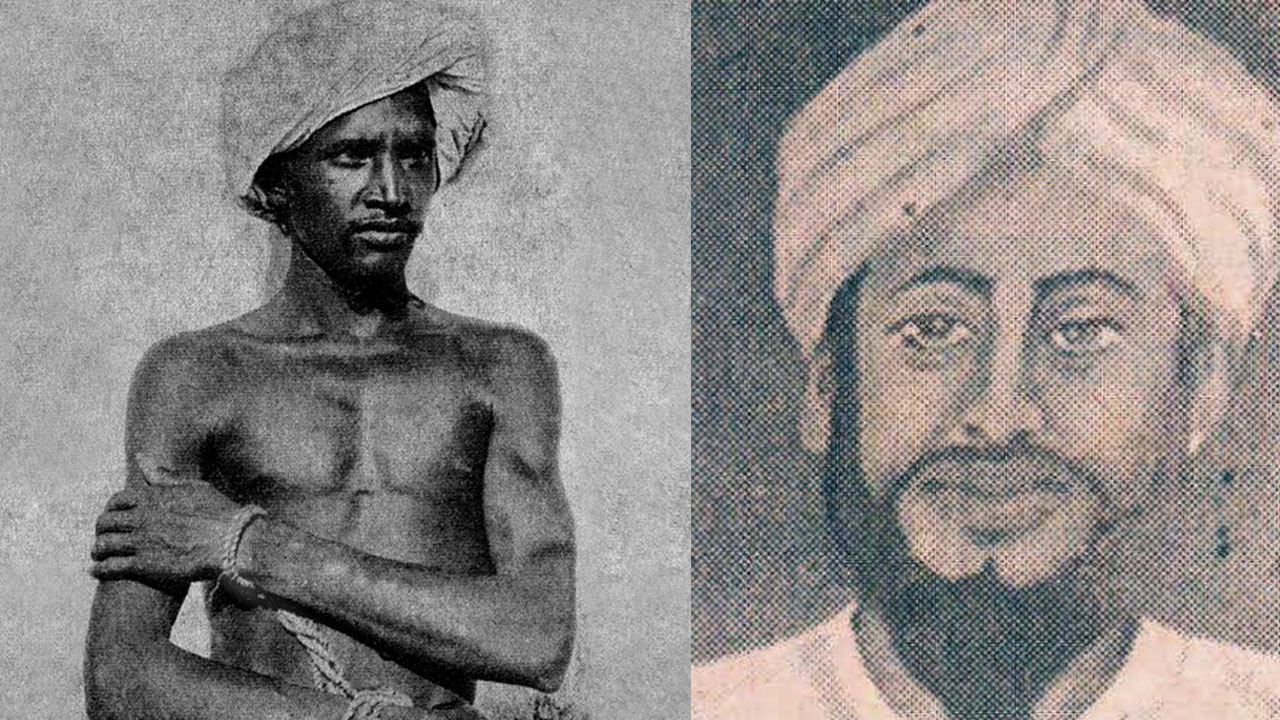On 6 October 1956, barely two months before his death, in a hotel in Nagpur, Dr B.R. Ambedkar declared, “I will accept and follow the teachings of Buddha. I will keep my people (Mahars) away from the different opinions of Hinyana and Mahayana, two religious orders. Our Bouddha Dhamma is a new Bouddha Dhamma, Navayana”[1]. He founded Navayana, the “New Way”, as a sect of modern Indian Buddhism. It was meant to be the vehicle for the emancipation of the Untouchables. Anne M. Blackburn, a historian of Buddhism, has argued that Ambedkar understood Buddhism, religion, kinship and nationalism as a related set of terms with social and political implications and drew upon Buddhism to create a model for a moral community ideologically coexistent with, although not subordinate to, Brahmanical Hinduism and Indian nationalism.[2]
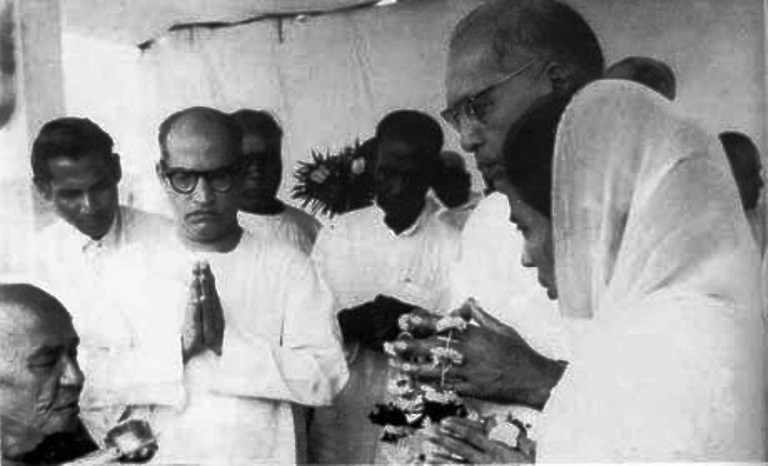
According to historian C.A. Bayly, even before Ambedkar’s announcement of his intention to renounce Hinduism, he had grappled with the idea of constitutionalism and argued in favour of “legal recognition” over “social recognition”, stating that he was dealing with the case of a society where dominant groups didn’t accord even common humanity to Untouchables and many other lower castes. Ambedkar’s idea of nationality built on common memories, myths of origin and history seemed to have hinted at a common identity that could have prescribed equality to the Untouchables[3]. Author and academic Ananya Vajpeyi maintains that the failure of law, legislations and politics to solve the problems of untouchability made him seek the conversion of Untouchables to Buddhism, which provided a religious identity and self-respect to the Untouchables. Implied here is the centrality of the State in Ambedkar’s beliefs and philosophy. He had concluded that the majority had lost the will to reform itself by 1951, when Nehru’s cabinet withdrew its support to the Hindu Code Bill (a watered-down version of which was passed subsequently in 1955); he had resigned as law minister on this issue. The conviction grew on him that the liberation of Dalits no longer lay within Hinduism but rather it was Hinduism from which Dalits needed liberation[4]. The role of the State becomes relevant here.
Hermeneutic criticism is also evident. In the final section of Annihilation of Caste, he not only explained the absurdities and inequities propagated in ancient Sanskrit texts of Hindu law, the Vedas and the Shastras, but also their inadequacy to act as a guide to life and India’s independence struggle. In Ambedkar’s words, “Hindus must consider whether they should conserve the whole of their social heritage or select what is helpful and transmit to future generations only that much and no more”[5]. Ambedkar elaborately engaged with the Hindu “sacred” texts: He critiqued Vedas from all possible angles; he questioned the origin of the “Aryans” who composed it (asked whether there existed an “Aryan invasion”) and the subjugation of the Untouchables in these texts by analyzing the origin of the terms such as dasas and dasyus.[6]
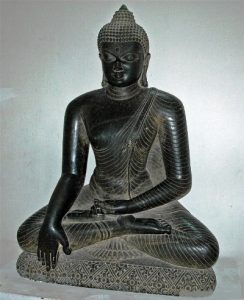
“Prof. John Dewey, who was my teacher and to whom I owe so much, has said: ‘Every society gets encumbered with what is trivial, with dead wood from the past, and with what is positively perverse … As a society becomes more enlightened, it realizes that it is responsible not to conserve and transmit the whole of its existing achievements but only such as to make a better future society”[7]. These words provide ample hint towards the influence that philosopher John Dewey had on Ambedkar. It must also be noted that Ambedkar had also tried to accommodate Dewey’s concept of “endosmosis”. Ambedkar employed it frequently in his writing as a metaphor for communication in a democratic society. It referred to the fluidity of the channels through which groups and individuals in a democracy are linked and interact with each other freely. Ambedkar argued that “social endosmosis” is blocked because of the societal division between the “privileged and the subject class”. This division surfaces wherever one group has interests “of its own”, which prevents it from having a full interaction with other groups. The group safeguards its own interests, instead of choosing to reorganize and progress through wider relationships. This explains the exclusiveness of India’s high-caste groups and the failure of “social endosmosis”. In contrast, Ambedkar said, “in an ideal society there should be many interests consciously communicated and shared. There should be varied and free points of contact with other modes of association. In other words there must be social endosmosis.” Dewey’s influence is being discussed here, because his ideas and methodology shaped, to some extent, Ambedkar’s earliest analysis of the caste hierarchy (and its evils) and the ways to do away with it. Ambedkar also inherited from Dewey the notions of ‘liberty, equality and fraternity’ (which Dewey discussed as a part of his lectures but did not endorse in his books).
According to Bayly, Ambedkar diverged from classical liberalism in the sense that in his formulation as a constitutional liberal thinker, the universalist idea of rights paved way for a positive discrimination in favour of the oppressed[8]. Equality would imply the equal treatment of and equal opportunities to the Untouchables and liberation from the dominance of high-caste Hindus (as seen in his concept of Nirvana). Fraternity to him, meant democracy, not merely a form of government but a mode of associated living, of conjoint communicated experience with an attitude of respect and reverence towards fellowmen[9]. His idea of fraternity is also evident in his consistent emphasis on the “collective” and the notion of kinship.
Bayly has written that even before Ambedkar’s endorsement of conversion of the Untouchables to Buddhism as a social tactic, he had been attracted to it for its emphasis on social harmony, promoting reverence rather than worship[10]. Ananya Vajpeyi recognizes a few reasons for Ambedkar’s choice of Buddhism – it being one of the first religious systems in the history of Indian to challenge the caste system, its inclusive nature, its global character and the revivalism Buddhism underwent in different regions (Buddhism witnessed renaissance in the 20th century in Victorian Britain and its colonies in South Asia; Sir Edwin Arnold published his poem on Buddha, “The Light of Asia” in 1879; T.W. Rhys Davids founded the Pali Text Society in England in 1881, etc)[11]. On the eve of his conversion, Ambedkar described his conversion as the least harmful route for the country since Buddhism was indigenous[12]. Ambedkar wanted inclusion and parity for the Untouchables and not seclusion within the Hindu India. Therefore, he refrained from conversion into Christianity or Islam (which would perhaps “denationalize” the Untouchables).[13]
Ambedkar believed that Untouchables in the caste order were erstwhile Buddhists who were incorporated by the Hindus into their own social order as servants and slaves; thus, a return to Buddhism for the Untouchables would be to claim their rightful home[14]. Ambedkar, as mentioned in his declaration, departed to a large extent from the earlier sects of Buddhism. Ambedkar’s Buddha was a marga data (giver of a path, guide) and not a moksa data (giver of the transcendental emancipation, deliverer), who did leave to attain enlightenment but with full knowledge and consent of his family members who, later, themselves became the earliest converts to Buddhism. Buddha, to him, was a mortal who didn’t transcend human conditions; rationality, verifiability, humanism and “scientific temper” in Buddha’s teachings drew his attention. According to Ananya Vajpeyi, Ambedkar found in Buddhists elements of intellectual curiosity, ethical doubt, rich and diverse life experiences and questions about the larger meaning of moral existence and a range of human emotions; they tried to disassociate themselves from the base and humiliating roles assigned to them in the Hindu narratives. Thus, she concluded that Ambedkar’s choice of Buddhism wasn’t positive (an attraction towards Buddhism) and negative (a rejection of other religions especially Hinduism).[15]
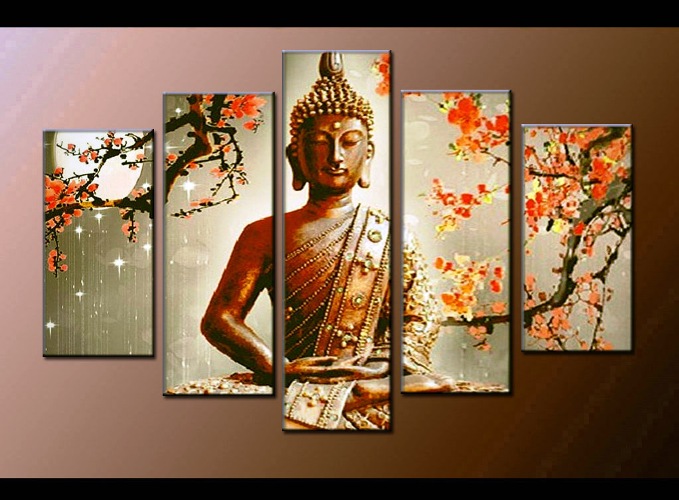
The doctrine of “selflessness” or “no selfhood” of original Buddhism that rejected the notion of unitary, stable and identifiable self, which could be used in favour of the collective, also appealed to him [16]. Thus, most of the modifications and alterations in the basic tenets of Buddhism introduced by Ambedkar’s Navayana were aimed at paving way for the collective.
Ambedkar’s Navayana didn’t accept the Four Noble Truths because if suffering was everything, a social order could never be established. Ambedkar interpreted dukkha as collective social suffering – suffering that is socially constituted and historically specific and conquered only via a creed that placed suffering at the centre of its ethical structure – ie, it was Buddhism that could relieve the Untouchables from their discrimination and denigration at the hands of caste Hindus.[17]
Navayana rejected the concept of rebirth; it was oriented towards collective deliverance and not individual liberation, the purpose being a better “this life” and not the care of the afterlife. Navayana provided a new dimension to the concept of nirvana, aiming at the anchoring of the experientially knowledgeable self within its material surrounding rather than in the abstract imaginings of a Universal Self or other selves conceived outside of humanly cognizable space and time. Nirvana, therefore, lay not in self-realization but in an equal society; it emphasized understanding of suffering, knowledge, etc, on a social – instead of an individual – basis.[18]
Ambedkar realized that if Buddhism continued to be an intimidating and highly institutionalized order of renunciants, priests and intellectuals, it would never be able to absorb India’s Untouchables. Hence, Navayana also intended to rearrange the sangha or Buddhist community in a way that the bhikkhu (monk) and bhikkhuni (nun) are on an equal footing with the lay practitioner (upasak/upasika); it further alluded to associating the figure of the bhikkhu with an ethic of social service rather than with the highly anti-social discipline of self-knowledge and self-realization.[19]
However, Anne M. Blackburn assumes a different stance. According to her, Ambedkar articulated a view that the forces of kinship and religious sanction generate and sanction feelings of individual self-worth and moral responsibility, which would redress social inequality. This strength doesn’t, however, proceed simply from a sense of unity. Ambedkar’s vision of ancient Buddhism as a tradition of egalitarian social reform and his exegesis of key Buddhist concepts are clearly crucial to his belief that Buddhism would, indeed, protect such values. Although Ambedkar doesn’t explicitly link these views to political mobilization, it appears from his continued involvement in political affairs as well as his views on nationalism that Buddhists, fortified by the forces of religious kinship, are expected to contest social inequality in the political arena rather than in an area of shared morality [20]. Thus, Navayana not only had social and moral but also political bases.
Bibliography
- Bayly, C.A., Recovering Liberties: Indian Thought in the Age of Liberalism and Empire, Cambridge University Press, New Delhi, 2012.
- Bellwinkel-Schempp, Maren, ‘From Bhakti to Buddhism: Ravidas and Ambedkar’, Economic and Political Weekly, Vol 42, No 23, 9 June 2007, pp 2177-2183.
- Blackburn, Anne M., ‘Religion, Kinship and Buddhism: Ambedkar’s Vision of a Moral Community’, The Journal of the International Association of Buddhist Studies, Vol. 16, No 1 (1993), pp 1-23.
- Mukherjee, Arun, ‘B.R. Ambedkar, John Dewey, and the Meaning of Democracy’, New Literary History, Vol 40, No 2 (2009), pp 345-370.
- Pandey, Gyanendra, ‘The Time of the Dalit Conversion’, Economic and Political Weekly, Vol 41, No 18, May 2006, pp 1779-1788.
- Sharma, Arvind, ‘Dr B.R. Ambedkar on the Aryan Invasion and the Emergence of the Caste System in India’, Journal of the American Academy of Religion, Vol 73, No 3 (2005), pp 843-870.
- Vajpeyi, Ananya,Righteous Republic: The Political Foundations of Modern India(Cambridge, MA, 2012).
[1] Dr B.R. Ambedkar, Press interview on 13 October 1956 at Sham Hotel, Nagpur, Navayan: Homeland for Ambedkarite Buddhism (www.navayan.com).
[2] Anne M. Blackburn, ‘Religion, Kinship and Buddhism: Ambedkar’s Vision of a Moral Community’, The Journal of the International Association of Buddhist Studies, Vol 16, No 1, (1993), pp 1-2.
[3] C.A. Bayly, Recovering Liberties: Indian Thought in the Age of Liberalism and Empire, Cambridge University Press, New Delhi, 2012, p 29
[4] Arvind Sharma, ‘Dr B.R. Ambedkar on the Aryan Invasion and the Emergence of the Caste System in India’, Journal of the American Academy of Religion, Vol 73, No 3 (2005), p 865.
[5] B. R. Ambedkar, ‘Annihilation of Caste with a Reply to Mahatma Gandhi’ (1936), in Dr Babasaheb Ambedkar: Writings and Speeches, Vol 1, compiled by Vasant Moon (Bombay: Education Department, Government of Maharashtra, 1979), p 79.
[6] Arvind Sharma, ‘Dr B.R. Ambedkar on the Aryan Invasion and the Emergence of the Caste System in India’, Journal of the American Academy of Religion, Vol 73, No 3 (2005), pp 843-870.
[7] Ibid.
[8] C.A. Bayly, Recovering Liberties: Indian Thought in the Age of Liberalism and Empire, Cambridge University Press, New Delhi, 2012, p 306 and p 310.
[9] Arun Mukherjee, ‘B.R. Ambedkar, John Dewey, and the Meaning of Democracy’, New Literary History, Vol 40, No 2 (2009), pp 345-370.
[10] C.A. Bayly, Recovering Liberties: Indian Thought in the Age of Liberalism and Empire, Cambridge University Press, New Delhi, 2012, p 303.
[11] Ananya Vajpeyi, Righteous Republic: The Political Foundations of Modern India, Cambridge, MA, 2012, p 216.
[12] Anne M. Blackburn, ‘Religion, Kinship and Buddhism: Ambedkar’s Vision of a Moral Community’, The Journal of the International Association of Buddhist Studies, Vol 16, No 1, (1993), p 10.
[13] According to Ananya Vajpeyi, for Ambedkar, Christianity was “alien” to Indians mainly because of its association with colonialism. He turned down Islam largely because of the experience of the Partition; conversion to Islam would have sent the message that Untouchables too were opting out of India; the millions of Muslims who had stayed behind in India became a numerically as well politically diminished minority.
[14] Ananya Vajpeyi, Righteous Republic: The Political Foundations of Modern India (Cambridge, MA, 2012).
[15] Ibid, pp 214 – 215.
[16] Ibid, p 232.
[17] Ananya Vajpeyi, Righteous Republic: The Political Foundations of Modern India (Cambridge, MA, 2012).
[18] Ibid, p 230.
[19] Ibid.
[20] Anne M. Blackburn, ‘Religion, Kinship and Buddhism: Ambedkar’s Vision of a Moral Community’, The Journal of the International Association of Buddhist Studies, Vol 16, No 1 (1993), p 10.
Forward Press also publishes books on Bahujan issues. Forward Press Books sheds light on the widespread problems as well as the finer aspects of Bahujan (Dalit, OBC, Adivasi, Nomadic, Pasmanda) society, literature, culture and politics. Next on the publication schedule is a book on Dr Ambedkar’s multifaceted personality. To book a copy in advance, contact The Marginalised Prakashan, IGNOU Road, Delhi. Mobile: +919968527911.
For more information on Forward Press Books, write to us: info@forwardmagazine.in

